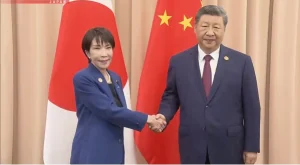by Mehmet Emin Hazret
1. Strategic Positioning Through “Ebedi Komşuluk” Treaty
At the June 16–18, 2025 summit in Astana, China signed a “Permanent Good-Neighborliness and Friendly Cooperation” treaty with Kazakhstan, Kyrgyzstan, Tajikistan, Turkmenistan, and Uzbekistan
.
Through this, China paved the way for collaboration in trade, energy, infrastructure, security, and education—key areas that deepen its foothold across the region.
2. Massive Belt & Road Infrastructure Push
China is leading record Belt and Road Initiative (BRI) investments, with Central Asia receiving approximately $25 billion in the first half of 2025, Kazakhstan alone accounting for $23 billion
Reuters
Major projects include the China–Kyrgyzstan–Uzbekistan freight railway (523 km, completion by ~2029) to boost connectivity with Europe
, and new trans-Caspian and Middle Corridor routes bypassing Russia, reinforcing China’s strategic logistics autonomy
3. Soft Power via Education & Cultural Exchange
Over 3,000 scholarships were announced to train students in technology fields
China expanded its influence through Confucius Institutes, language programs, and high-tech training, even localizing offerings (e.g. Kazakh-language content) to strengthen cultural affinity
4. Securing Energy & Natural Resources
Investments focus on energy and critical minerals; Chinese firms secured uranium mining and hydrogen centers in Kazakhstan
Central Asia remains rich in oil, gas, lithium, and rare earths—resources essential to China’s high-tech and green energy ambitions
5. Expanding Security & Geopolitical Influence
Summit agreements included cooperation on counterterrorism, regional security, and Afghanistan stability
China’s military presence is also increasing: arms exports, joint exercises, and security collaboration challenge Russia’s traditional regional dominance
Hidden Agendas & Strategic Risks
Bypassing Russian Influence
Projects like trans-Caspian routes and railway-links around Russia indicate strategic decoupling, reducing Chinese reliance on Moscow’s transport networks
Soft Power Leading to Deeper Influence
Graduates from Chinese university programs may align with Chinese systems and values, embedding long-term cultural and geopolitical influence—potentially reshaping regional leadership dynamics
Economic Leverage = Political Leverage
With BRI loans and strategic investments, China gains considerable sway. Some local pushback exists—land lease protests in Kazakhstan and Kyrgyz apprehensions over dependency signal caution
Geopolitical Counterbalance Strategy
In a shifting global landscape (e.g., waning US presence, Russia’s focus on Ukraine, EU interest), China seeks to cement its role as the dominant external power in Eurasia
Summary: Soft Meets Hard Power
Domain Key Initiatives
Hard Power Infrastructure (rail, energy, transport), security treaties
Soft Power Education scholarships, linguistic & cultural integration
Geo-Strategy Balancing against Russia, reducing Western influence
China’s combination of deep investments, educational embedding, and security collaborations signals a comprehensive strategy to transform Central Asia into a satellite of its influence—economically, culturally, and politically.
Conclusion
China’s agenda in Central Asia extends far beyond diplomacy—they’re building a long-term sphere of influence using integrated soft and hard power. Central Asian states benefit economically and infrastructure-wise, but must navigate dependency risks and geopolitical friction with Russia, the West, and within their own societies.











Be First to Comment